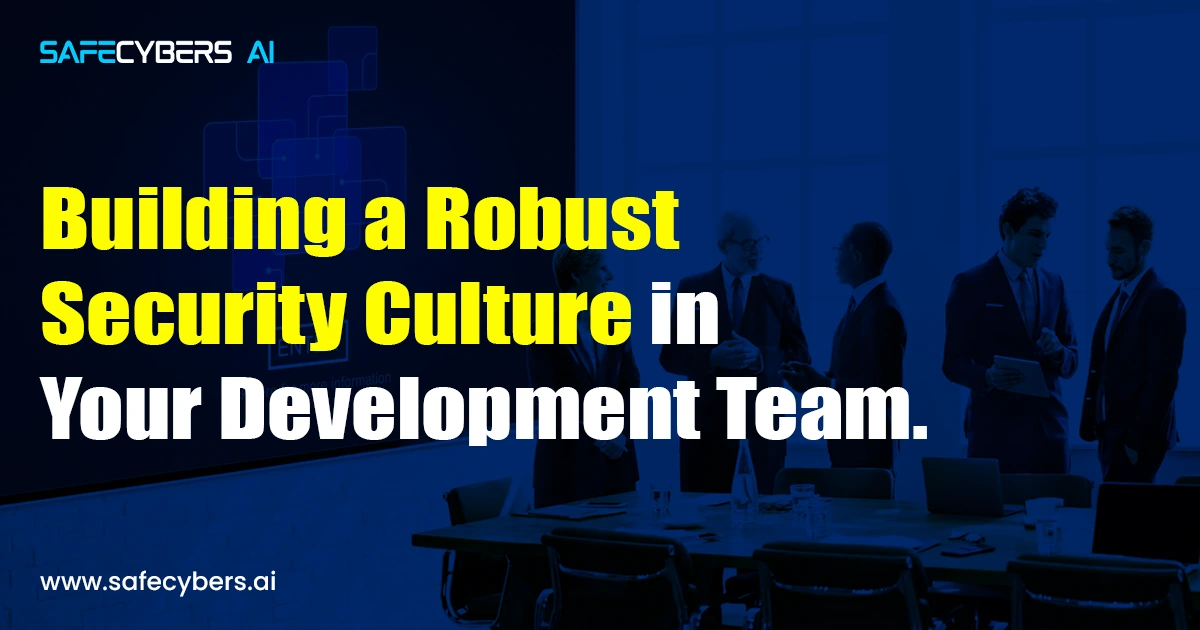
Building a Strong Security Culture: Guide for Development Teams
Learn how to create a robust security culture within your development team with our easy-to-follow guide. Enhance cybersecurity and protect your organization from cyber threats.

Where everything is connected through technology, security is more important than ever. Whether you're a small startup or a big corporation, keeping your data and systems safe from cyber threats should be a top priority. And one of the best ways for you to do that is by building a robust security culture within your development team. In this guide, we'll explore how you can create a strong security culture in your development team, step by step.
Why do you need to cultivate a Security Culture?
Security culture refers to the collective mindset and behaviors within an organization regarding security practices. A strong security culture helps prevent security breaches and ensures that security is prioritized in all aspects of the development process.
It will bring a sense of responsibility and accountability among team members towards safeguarding sensitive information and protecting against cyber threats.
Educate Your Team:
-
Start by providing comprehensive training and education on security best practices.
-
Make sure that all team members understand the importance of security and their role in maintaining it.
-
Cover topics such as secure coding practices, password management, data encryption, and how to recognize and respond to security incidents.
Lead by Example:
-
You have to set a positive example by prioritizing security in your own actions and decisions.
-
Demonstrate the importance of security through your words and actions, and encourage others to do the same.
-
Show your team with your actions that security is not just a checkbox but an ongoing commitment that requires everyone's participation.
Promote Open Communication:
-
Create an environment where your team members will feel comfortable reporting security concerns or incidents without fear of retribution.
-
Encourage open dialogue about security issues with your team and promote a culture of collaboration and shared responsibility.
-
Implement channels for reporting security incidents, such as anonymous reporting systems or dedicated email addresses.
Implement Security Policies and Procedures:
-
Establish clear and concise security policies and procedures that outline expectations and guidelines for security practices.
-
You have to make sure that all team members are aware of these policies and understand their roles and responsibilities in adhering to them.
-
Regularly review and update security policies to reflect changes in technology and emerging threats.
Provide Resources and Support:
-
Equip your team with the tools and resources they need to implement security best practices effectively.
-
Invest in security-related training, certifications, and workshops to enhance team members' skills and knowledge.
-
Provide your team the access to security tools and technologies that help automate security processes and streamline security operations.
Culture of Continuous Improvement:
-
Start encouraging a mindset of continuous improvement by regularly evaluating and refining security practices.
-
Conduct regular security assessments and audits to identify weaknesses and areas for improvement.
-
Use examples of lessons learned from security incidents or breaches to inform future security decisions and actions.
Recognize and Reward Security Champions:
-
Acknowledging and celebrating team members who demonstrate a commitment to security excellence, will motivate them even more.
-
You can also establish recognition programs or awards to highlight individuals or teams that go above and beyond in promoting security culture.
-
Publicly praise and reward exemplary security behaviors to reinforce their importance and encourage others to follow suit.
Stay Informed and Adapt:
-
Start staying informed about the latest security trends, threats, and best practices through ongoing education and professional development.
-
You have to adapt your security practices and strategies in response to changing threats and technologies.
-
Build a culture of adaptability that enables your team to effectively respond to new and evolving security challenges.
By following these steps, you can cultivate a strong security culture within your development team that empowers them to proactively identify and mitigate security risks, ultimately leading to a more secure and resilient organization. Because building a security culture is an ongoing journey that requires dedication, collaboration, and continuous improvement.